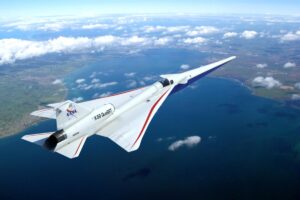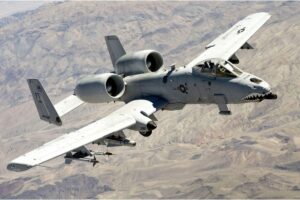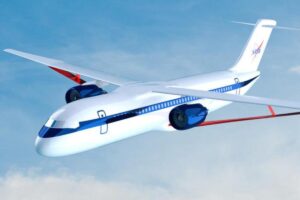Simplify Conversion: SYNCHRO to ARINC-429 Protocols
Introduction
In today’s dynamic aerospace and defense sectors, integrating diverse subsystems with dissimilar communication and signaling methods is critical to mission success. One such interoperability challenge exists when data from rotary position sensors using SYNCHRO signaling must be interpreted by digital systems that operate over ARINC-429 data buses. SYNCHRO to ARINC-429 converters solve this challenge by translating analog angular data into standardized digital messages. These converters play a vital role in legacy-modern integration, especially in aircraft retrofits and hybrid avionic systems. This white paper offers a detailed exploration of the technology, application, and future direction of SYNCHRO to ARINC-429 protocol conversion.
1. Background on Communication Standards
1.1 Understanding SYNCHRO Signaling
SYNCHRO systems have been a staple in aircraft and naval navigation systems for decades. A SYNCHRO typically consists of a rotor and stators, where the rotor position influences a variable voltage signal sent to receiving devices. This analog output represents a precise angular position, making SYNCHROs ideal for transmitting rotary position data across long distances without loss of fidelity. However, the continuous analog nature of SYNCHROs contrasts sharply with modern digital systems, requiring a conversion interface for seamless integration.
1.2 Fundamentals of ARINC-429
ARINC-429 is a unidirectional, point-to-point data transfer protocol widely adopted in commercial aviation for its simplicity and reliability. It uses a two-wire differential signaling scheme at either 12.5 or 100 kbps. Each message frame consists of 32 bits, including a label, data, and parity, providing clarity and error detection. ARINC-429 is essential for modern flight control, navigation, and systems management.
1.3 Compatibility Gap
The analog nature of SYNCHRO outputs is incompatible with the digital, message-oriented ARINC-429 bus. Without conversion, systems would require redundant sensors or analog processing hardware. A protocol converter provides a cost-effective and efficient bridge between these technologies.
2. The Role of SYNCHRO to ARINC-429 Converters
2.1 Purpose and Function
These converters take real-time analog voltage inputs from a SYNCHRO and compute angular position values, which are then encoded into ARINC-429 format. The conversion process includes analog-to-digital signal processing, message formatting, error checking, and data synchronization.
2.2 Bridging Analog and Digital Worlds
The converter functions as a real-time data translator. It continuously samples the SYNCHRO signal using a resolver-to-digital converter (RDC), processes this information in microcontrollers or FPGAs, and then formats it into ARINC-429 compliant messages. This allows digital flight computers, displays, and recorders to interpret legacy analog data.
2.3 Key Benefits
- Preservation of Legacy Hardware: Avoids the need to replace functional SYNCHRO sensors.
- Reduced System Cost: Minimizes the expense of complete system overhauls.
- Improved Interoperability: Seamlessly integrates with digital data networks.
- Enhanced Accuracy: High-speed converters reduce latency and data lag.
3. Converter Architecture and Design
3.1 Input Signal Conditioning
SYNCHRO signals are often subject to noise and require robust conditioning. The converter’s analog front-end filters and amplifies the input to ensure accurate digitization. Voltage protection circuits safeguard internal electronics from transient spikes.
3.2 RDC (Resolver-to-Digital Converter)
This module is critical for capturing angular data. The RDC samples the rotor and stator signals, performs phase-sensitive demodulation, and outputs a digital word corresponding to shaft position, often with resolution up to 16 bits.
3.3 Microcontroller or FPGA Logic
Once digitized, a microcontroller or FPGA interprets the RDC output and prepares it for ARINC-429 transmission. This includes determining the correct label, data encoding, and parity bit calculation.
3.4 ARINC-429 Transmitter
The transmitter stage applies differential voltage signals compliant with ARINC-429 electrical specifications. It ensures message timing and voltage levels meet standard thresholds for receiver interpretation.
3.5 Environmental and Power Considerations
Converters must operate in demanding environments, so thermal regulation, power filtering, and rugged enclosures are standard. Aviation applications often demand MIL-STD environmental compliance.
4. Applications and Use Cases
4.1 Cockpit Instrumentation
Legacy cockpit instruments such as gyroscopic compasses or position sensors often use SYNCHRO outputs. Converters allow these signals to be processed by modern digital display systems or EFIS (Electronic Flight Instrument Systems).
4.2 Flight Control Systems
Aircraft that retain mechanical or analog actuators still use SYNCHRO-based position feedback. Converters enable feedback data to be logged or analyzed digitally, aiding in diagnostics and control.
4.3 Navigation Systems
SYNCHRO-based systems like TACAN or ILS indicators benefit from digital conversion, improving interoperability with FMS (Flight Management Systems) and reducing cockpit wiring complexity.
4.4 Retrofit and Modernization Projects
Military and commercial aircraft undergoing upgrades use converters to preserve existing sensors while integrating with digital mission systems or data networks.
4.5 Ground-Based Simulators
Flight simulators often emulate SYNCHRO outputs. Converters allow these to feed ARINC-429-based avionics for realistic training environments.
5. Integration Challenges and Solutions
5.1 Signal Degradation and Interference
Long SYNCHRO cable runs may pick up noise. Proper shielding and differential signal processing mitigate these issues.
5.2 Synchronization with ARINC-429 Bus
Converters must time message output precisely to avoid data collision or misinterpretation on the ARINC-429 line. Programmable timing controls and message repetition rates help maintain integrity.
5.3 Resolution and Accuracy
Precision in the RDC stage is vital. Calibration tools and feedback loops ensure converter accuracy remains within acceptable limits.
5.4 Software and Configuration
Users must configure label assignment, data scaling, and parity settings. Graphical configuration tools and EEPROM storage simplify setup.
5.5 Environmental Stress Testing
Testing for vibration, temperature, and EMI/EMC ensures the converter performs reliably under real-world aerospace conditions.
6. Standards and Certification
6.1 DO-160 Environmental Testing
Compliance with DO-160 ensures the converter withstands altitude, humidity, temperature extremes, and vibration.
6.2 DO-178C and DO-254 Compliance
When converters use embedded software or complex hardware logic, certification for software (DO-178C) and hardware (DO-254) ensures system safety.
6.3 ARINC-429 Electrical Compliance
Transmitters must meet voltage, impedance, and timing thresholds per ARINC-429 specs.
6.4 Industry-Specific Requirements
Custom certifications for military, commercial, or industrial applications may also be required, depending on end use.
7. Features of Modern Converters
7.1 Multi-Channel Support
Some converters handle multiple SYNCHRO inputs and output corresponding ARINC-429 messages on multiple channels, increasing integration density.
7.2 Programmable Labels and Scaling
Operators can define ARINC-429 labels and scale analog input ranges to suit specific applications.
7.3 Built-In Testing and Diagnostics
BIT functions monitor signal validity, channel health, and internal performance, supporting predictive maintenance.
7.4 Remote Management
Ethernet or serial interfaces allow configuration, updates, and monitoring from remote terminals.
7.5 Size, Weight, and Power (SWaP) Optimization
Rugged converters are now available in compact modules that minimize power consumption and save panel space.
8. Selection and Implementation Best Practices
8.1 Requirements Gathering
Clearly define signal types, conversion accuracy, environmental needs, and output formats before selecting a converter.
8.2 Vendor Selection
Choose vendors with aerospace-grade design experience, long product lifecycles, and robust support.
8.3 System Simulation and Testing
Use hardware-in-the-loop (HIL) setups to validate converter performance before field deployment.
8.4 Lifecycle Documentation
Ensure availability of manuals, certifications, update tools, and end-of-life planning from vendors.
8.5 Training and Support
Integrators should be trained in configuration tools, calibration techniques, and troubleshooting practices.
9. Future Directions and Innovation
9.1 AI-Enabled Calibration
Future converters may use machine learning to self-calibrate and compensate for signal drift or wear.
9.2 Software-Defined Conversion
Digital platforms may allow field-programmable conversion logic, supporting new input types or bus formats.
9.3 Multi-Protocol Integration
Converters that bridge SYNCHRO, ARINC-429, CAN, Ethernet, and MIL-STD-1553 will reduce system complexity.
9.4 Cybersecurity Enhancements
Secure boot, authentication, and encryption will protect critical converter data in connected systems.
9.5 Open Standards and APIs
Open architecture converters with documented APIs will facilitate integration with digital twins and next-gen avionics stacks.
Conclusion
SYNCHRO to ARINC-429 protocol converters are vital tools for maintaining compatibility between legacy analog sensors and digital avionics systems. These devices preserve investment in proven hardware while supporting the growing demand for standardized data buses. As aircraft systems become more integrated and software-driven, the role of protocol converters will expand. Emerging features like programmability, AI, and cybersecurity will continue to push their capabilities and relevance in modern avionics architectures.





